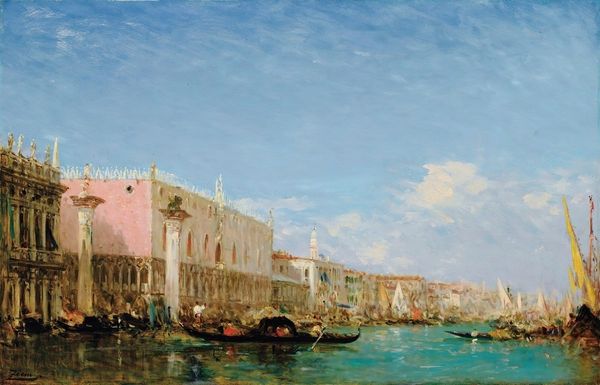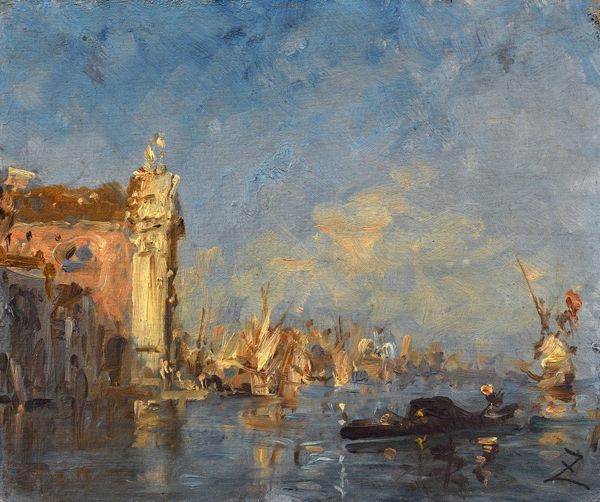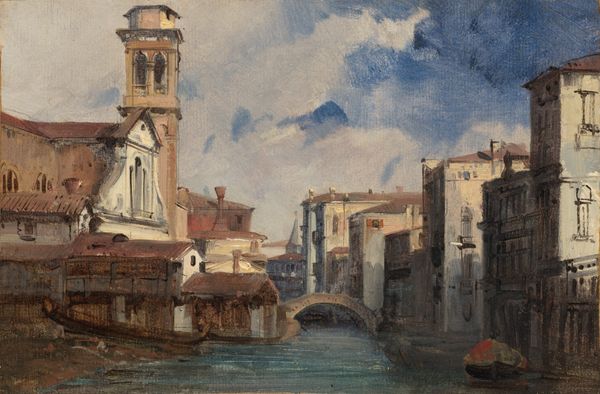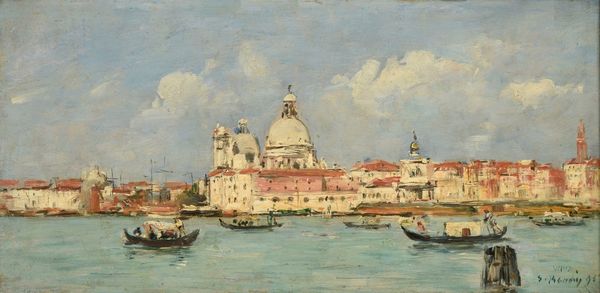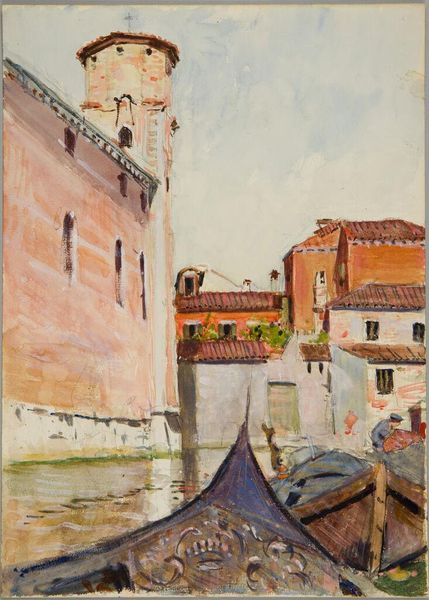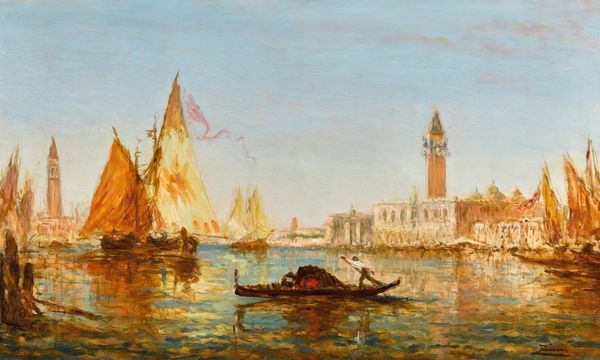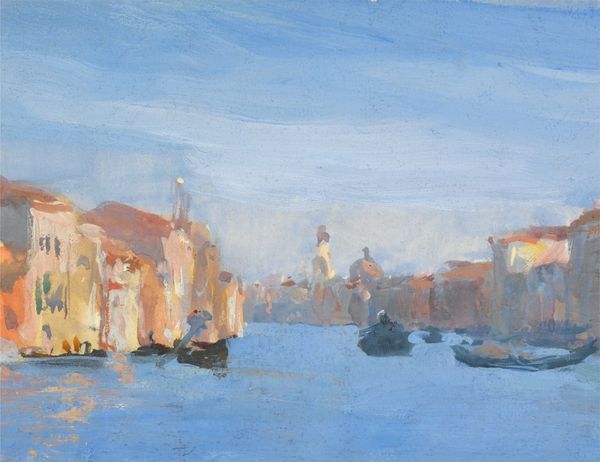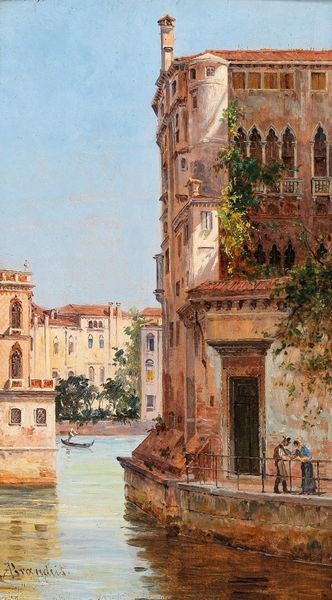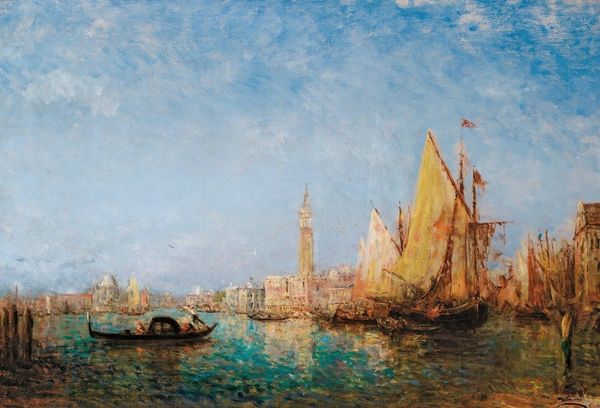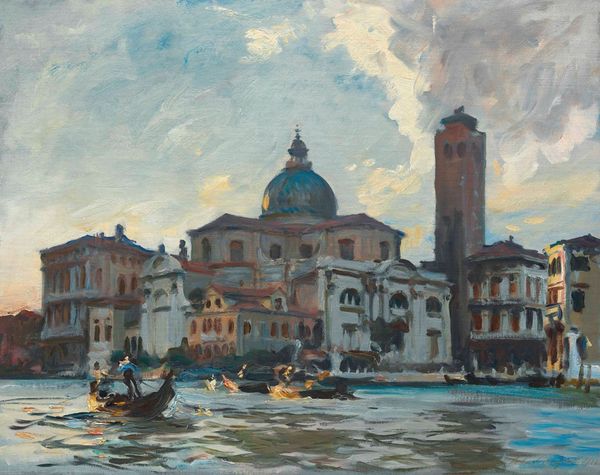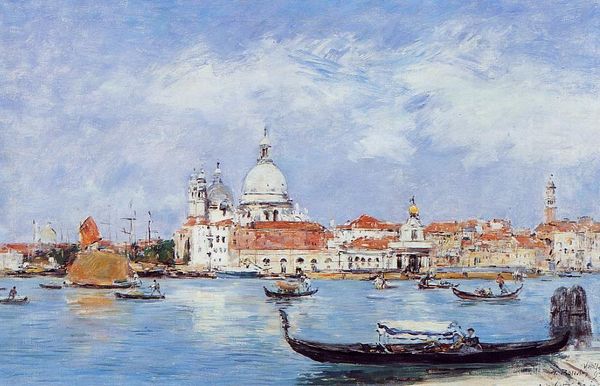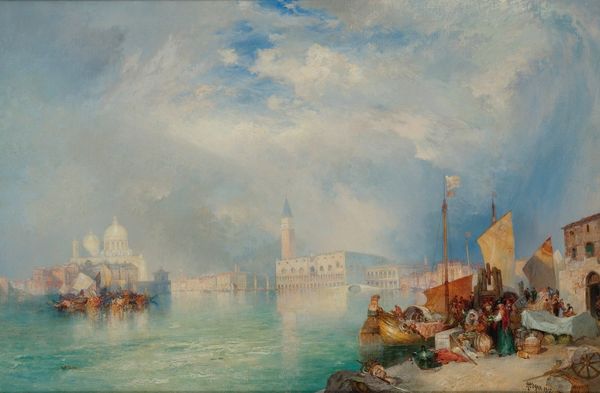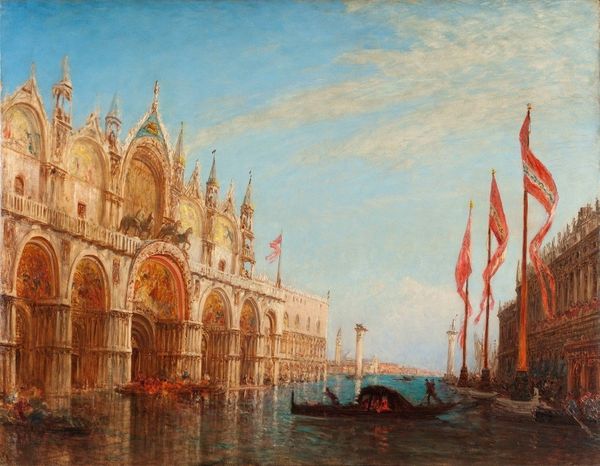
painting, oil-paint
#
venetian-painting
#
painting
#
impressionism
#
oil-paint
#
landscape
#
impressionist landscape
#
oil painting
#
cityscape
Copyright: Public Domain: Artvee
Editor: Here we have Felix Ziem's "Chiesa Dei Gesuati, Venice," an oil painting evoking the luminous atmosphere of the Venetian Lagoon. I’m struck by the way the architectural details seem to dissolve in the shimmering light. What draws your attention most when you look at this piece? Curator: Well, let’s consider the materiality itself. Ziem’s visible brushstrokes reveal his process. Oil paint, a product of industrial chemistry, allows him to capture fleeting light effects on canvas, which was increasingly available due to industrial manufacturing at this time. But what about the socio-economic context of Venetian imagery? How does the depiction of this church reflect the relationship between labor, consumption, and the city's cultural capital? Editor: That's an interesting perspective, considering Venice as a commodity, almost. I initially focused on the light and color. Is the materiality inherently linked to its status as 'art'? Curator: Precisely. The pigments themselves, how they are sourced, how the canvas is prepared, all point to a network of production and consumption. What were the social conditions enabling Ziem to produce this kind of image, and for whom was it intended? Think of the rise of tourism, the commercialization of picturesque views. Editor: So it's less about the "artistic genius" and more about the historical and economic systems at play? Curator: The “artistic genius” is inseparable from those systems! Consider, how does the market for paintings like this, feeding a growing middle class seeking status through art collecting, impact Ziem’s choices of subject and style? What stories do materials tell that aren’t always on the surface? Editor: This has really broadened my understanding, beyond just brushstrokes and composition. I see a painting now as part of something so much bigger than just the image itself. Curator: Exactly. Art exists within—and is actively shaped by—a material reality. Reflecting on how those realities affect artistic production invites us to question traditional notions of taste, talent, and even art historical value.
Comments
No comments
Be the first to comment and join the conversation on the ultimate creative platform.
